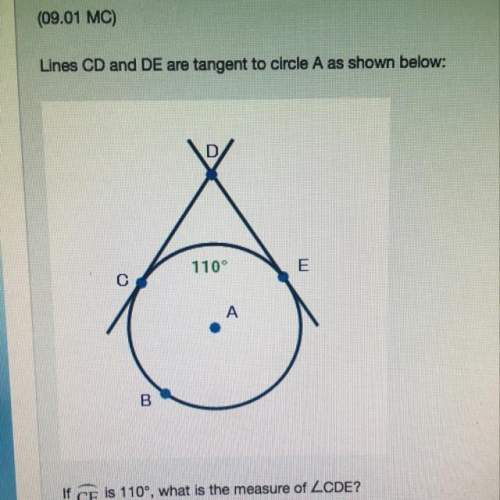
Mathematics, 01.12.2020 01:00 hbkakabryce0p3fkoq
It is given that ∠B ≅ ∠C. Assume AB and AC are not congruent. If AB > AC, then m∠C > m∠B by . If AC > AB, then m∠B > m∠C for the same reason. However, using the given statement and the definition of congruency, we know that m∠B = m∠C. Therefore, AB = AC and AB ≅ AC.
What is the missing reason in the proof?
converse of the triangle parts relationship theorem
substitution
definition of congruency
converse of the isosceles triangle theorem

Answers: 2


Other questions on the subject: Mathematics



Mathematics, 22.06.2019 03:30, tracyaleblanc
The area of a square floor on a scale drawing is 64 square centimeters, and the scale drawing is 1 centimeter: 3 ft. what is the area of the actual floor? what is the ratio of the area in the drawing to the actual area? the area of the actual floor is square feet. the ratio of the area in the drawing to the actual area is 1 square centimeter: square feet.
Answers: 3
You know the right answer?
It is given that ∠B ≅ ∠C. Assume AB and AC are not congruent. If AB > AC, then m∠C > m∠B by ....
Questions in other subjects:



Mathematics, 17.09.2019 07:50



Social Studies, 17.09.2019 07:50


Mathematics, 17.09.2019 07:50

Mathematics, 17.09.2019 07:50

Chemistry, 17.09.2019 07:50




